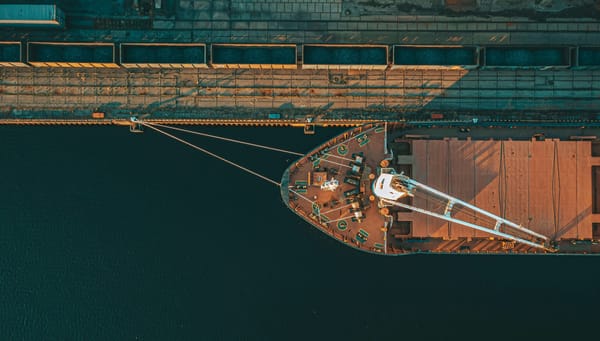Global Fisheries on the API

TL;DR The API is now a powerful new tool to help you access and utilize fishery information. We’ve made it ridiculously easy for anyone to ensure the sustainability and legality of your seafood supply chain.
I swear that is the last boring blog title I ever post. I know it's been a while. Larry, thanks for the emails. Yes, I also like Malibu Rum (aka “Bu”.) This week's super serious update will improve your access to accurate and comprehensive fishery data, which is becoming more crucial than ever. We're thrilled; actually, we’re really exhausted, so we’re more relieved to announce the latest addition to our Goldfish GraphQL API: the fisheries function!
The new fisheries function works seamlessly alongside the API’s existing vessel-check and species-check functions. For example, you could find a vessel's details, including its gear type, species, and authorized fishing area result, and then use the new fisheries function to validate it in one gloriously simple workflow.
Why Fisheries Matter
Before we dive into the details, let's discuss why this matters to you. Whether you're an importer, exporter, retailer, or anywhere else in the seafood supply chain, knowing the details of a fishery is crucial. This new function helps you:
- Make informed sourcing decisions
- Ensure compliance with regulations
- Verify sustainability claims
- Respond to customer inquiries with confidence
Our new fisheries function puts all this information at your fingertips faster and more efficiently than ever. I’m going to advocate for Larry straight up here. He needs a holiday. Feet up, on a beach, wielding a tiny sword loaded with fruit drawn from a tiny maiden's hand in his Malibu-and-orange, like Excalibur. It’s easy to be overwhelmed with sourcing data; verifying it is hard even for seasoned subject matter experts.
Our mission is to help the Larrys of the world, those individuals who tirelessly manage their company’s entire risk and compliance strategy by updating Excel with Google search while being inclusive of folks without a Larry. We’ll keep pushing for updates until that happens.
What Can You Do with the Fisheries Function?
The fisheries function allows you to query our extensive database of over 11,000 global fisheries. Yeh, 11,000. With just a few parameters, you can retrieve detailed information about specific fisheries, including:
- Authorizing country
- Species (scientific name or FAO 3-alpha code)
- Gear types
- *Aquaculture included
- Harvest areas (EEZ, FAO, RFMO, or high seas)
- [Redacted Super Secret Function]
We made it easy for anyone to quickly verify if a particular combination of authorizing country, species, gear type, and fishing area constitutes a known fishery and return all the relevant details in one go.
How It Works: A Simple Example
Let's try this one together on the Sandbar. You want to purchase skipjack tuna (Katsuwonus pelamis) from a new Chilean company. They source skipjack using longlines in the Inter-American Tropical Tuna Commission (IATTC) jurisdiction. Here's how you can use the fisheries function to verify this fishery:
query($input: FisheryInputParam!) {
searchFishery(input: $input) {
isFishery
fisheryDetails
}
}
Variables:
{
"input": {
"authorizingCountry": "CHL",
"speciesScientific": "Katsuwonus pelamis",
"harvestAreaRFMO": "IATTC",
"gearTypes": "Longlines"
}
}Example of how to write your input queries. You can test this exact example on the Sandbar.
To view the result, try this query yourself in the Sandbar! You’ll see that this is a real fishery and receive a bunch of exciting and relevant information (like codes) needed to comply with regulatory requirements such as SIMP, which we’ve covered here.
How It Works: For The Lazy
If you aren’t dying to run to the Sandbar **cough cough Larry**, we’ll show you the result in this second example.
query($input: FisheryInputParam!) {
searchFishery(input: $input) {
isFishery
fisheryDetails
}
}
{
"input": {
"authorizingCountry": "CAN",
"speciesScientific": "Gadus morhua",
"harvestAreaEEZ": "CAN",
"gearTypes": "Midwater trawls"
}
}Example of how to write your input queries. Test this Atlantic Cod example on the Sandbar.
The result below first tells you, “Yas, this is a fishery!” Secondly, you can learn that this fishery also exists in the Northwest Atlantic Fisheries Organization (NAFO) RFMO and in FAO Ocean Area 21. In the result, gear type, species, and country codes are provided to help you seamlessly transfer data with your supply chain or traceability company, and (as always) comply with regulatory requirements.
This example also lives on the Sandbar; feel free to try it out!
{
"data": {
"searchFishery": {
"isFishery": true,
"fisheryDetails": [
{
"authorizingCountry": {
"countryAlpha2": "CA",
"countryAlpha3": "CAN",
"countryName": "Canada"
},
"species": {
"scientificName": [
"Gadus morhua"
],
"speciesCode": [
"COD"
]
},
"gearTypes": [
{
"faoName": "Midwater trawls (nei)",
"faoAlpha": "TM",
"faoISSCFG": "03.29"
}
],
"isFarm": false,
"harvestArea": {
"harvestAreaEEZ": [
{
"eezAlpha2": "CA",
"eezAlpha3": "CAN",
"eezName": "Canada"
}
],
"harvestAreaFAO": [
{
"faoCode": "21",
"faoName": "Northwest Atlantic"
}
],
"harvestAreaRFMO": [
{
"rfmoCode": "NAFO",
"rfmoName": "Northwest Atlantic Fisheries Organization"
}
],
"harvestAreaHighSeas": true
}
}
]
}
}
}
This is the API’s result for the Atlantic Cod example described above. This example is live on the Sandbar for you to test. Reminder: this is designed to visualize computer-to-computer communications.
Why This Matters (According to some Ai Summarizer)
For Business:
- Streamlined Compliance: You can easily verify that your sourcing aligns with regulations and sustainability commitments. This is particularly crucial for companies operating in multiple jurisdictions with varying requirements.
- Enhanced Due Diligence: Quickly check if a fishery is known and legal, reducing the risk of sourcing from IUU (Illegal, Unreported, and Unregulated) fishing operations. This protects your brand reputation and helps avoid potential legal issues.
- Improved Efficiency: Get all the fishery details you need in one query, saving time and resources. This can significantly streamline your sourcing and auditing processes.
- Better Decision Making: Access comprehensive data to inform your sourcing strategies and sustainability initiatives. This can help you stay ahead of market trends and consumer demands for sustainable seafood.
- Enhanced Transparency: Easily provide detailed information about your seafood sources to customers, retailers, and regulators, building trust and credibility in your supply chain.
For Government Agencies:
- Effective Monitoring: Quickly verify the legality and sustainability of imported seafood, enhancing your ability to combat illegal fishing and protect domestic markets.
- Risk-Based Targeting: Use comprehensive fishery data to develop more sophisticated risk assessment models for import screening and inspections.
- Policy Development: Access detailed fishery information to inform policy decisions related to fisheries management, trade agreements, and sustainability initiatives.
- International Cooperation: Facilitate information sharing and collaboration with other nations on fisheries management and combating IUU fishing.
- Economic Analysis: Use fishery data to assess the economic impacts of various fishing activities and inform decisions about resource allocation and industry support.
Have a ‘Bu on the Sandbar
Try the fisheries function on our Sandbar, our open testing environment. Visit https://sandbar.goldfish.io/graphql to explore the capabilities of this new function without needing an access token. The updated API documentation for neeeeerds is here, detailing all the functions. This is a great way to see how the API can benefit your specific use case before engaging our awesome sales bros, Scott and Brooks (hi5).
AND IT'S LIVE!
The new functions are live for all current users. If you're not yet using our API, now is the perfect time to get started and see how this powerful tool can transform your seafood traceability efforts.
We’re excited to see how companies integrate these new functions into their existing software and workflows.
Mahalo from Goldfish’s Beach and ‘Bu Appreciation Society.
If you have read this far, we hid an “easter egg” in the API, which we’ll introduce on Thursday.
Do you have questions, or would you like a demo of the fisheries function in action? Reach out to our team at sales@goldfish.io.
Have no idea what an API is, but like the cut of our jib? You might be perfect for our Alpha tester program. Contact hello@goldfish.io, and we’ll chat.





